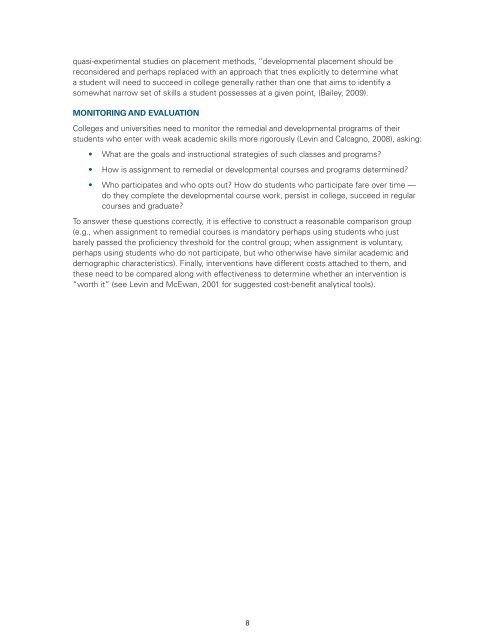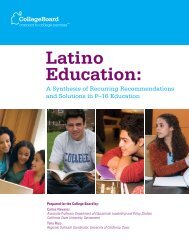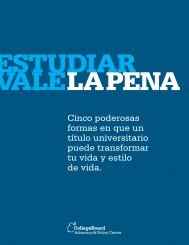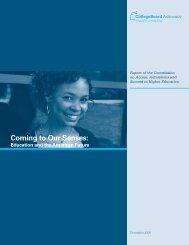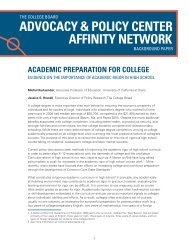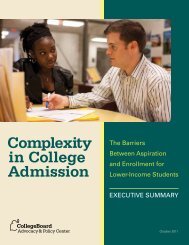Collegiate Remediation: A Review of the Causes and Consequences
Collegiate Remediation: A Review of the Causes and Consequences
Collegiate Remediation: A Review of the Causes and Consequences
Create successful ePaper yourself
Turn your PDF publications into a flip-book with our unique Google optimized e-Paper software.
quasi-experimental studies on placement methods, “developmental placement should be<br />
reconsidered <strong>and</strong> perhaps replaced with an approach that tries explicitly to determine what<br />
a student will need to succeed in college generally ra<strong>the</strong>r than one that aims to identify a<br />
somewhat narrow set <strong>of</strong> skills a student possesses at a given point, (Bailey, 2009).<br />
Monitoring <strong>and</strong> Evaluation<br />
Colleges <strong>and</strong> universities need to monitor <strong>the</strong> remedial <strong>and</strong> developmental programs <strong>of</strong> <strong>the</strong>ir<br />
students who enter with weak academic skills more rigorously (Levin <strong>and</strong> Calcagno, 2008), asking:<br />
• What are <strong>the</strong> goals <strong>and</strong> instructional strategies <strong>of</strong> such classes <strong>and</strong> programs?<br />
• How is assignment to remedial or developmental courses <strong>and</strong> programs determined?<br />
• Who participates <strong>and</strong> who opts out? How do students who participate fare over time —<br />
do <strong>the</strong>y complete <strong>the</strong> developmental course work, persist in college, succeed in regular<br />
courses <strong>and</strong> graduate?<br />
To answer <strong>the</strong>se questions correctly, it is effective to construct a reasonable comparison group<br />
(e.g., when assignment to remedial courses is m<strong>and</strong>atory perhaps using students who just<br />
barely passed <strong>the</strong> pr<strong>of</strong>iciency threshold for <strong>the</strong> control group; when assignment is voluntary,<br />
perhaps using students who do not participate, but who o<strong>the</strong>rwise have similar academic <strong>and</strong><br />
demographic characteristics). Finally, interventions have different costs attached to <strong>the</strong>m, <strong>and</strong><br />
<strong>the</strong>se need to be compared along with effectiveness to determine whe<strong>the</strong>r an intervention is<br />
“worth it” (see Levin <strong>and</strong> McEwan, 2001 for suggested cost-benefit analytical tools).<br />
8


